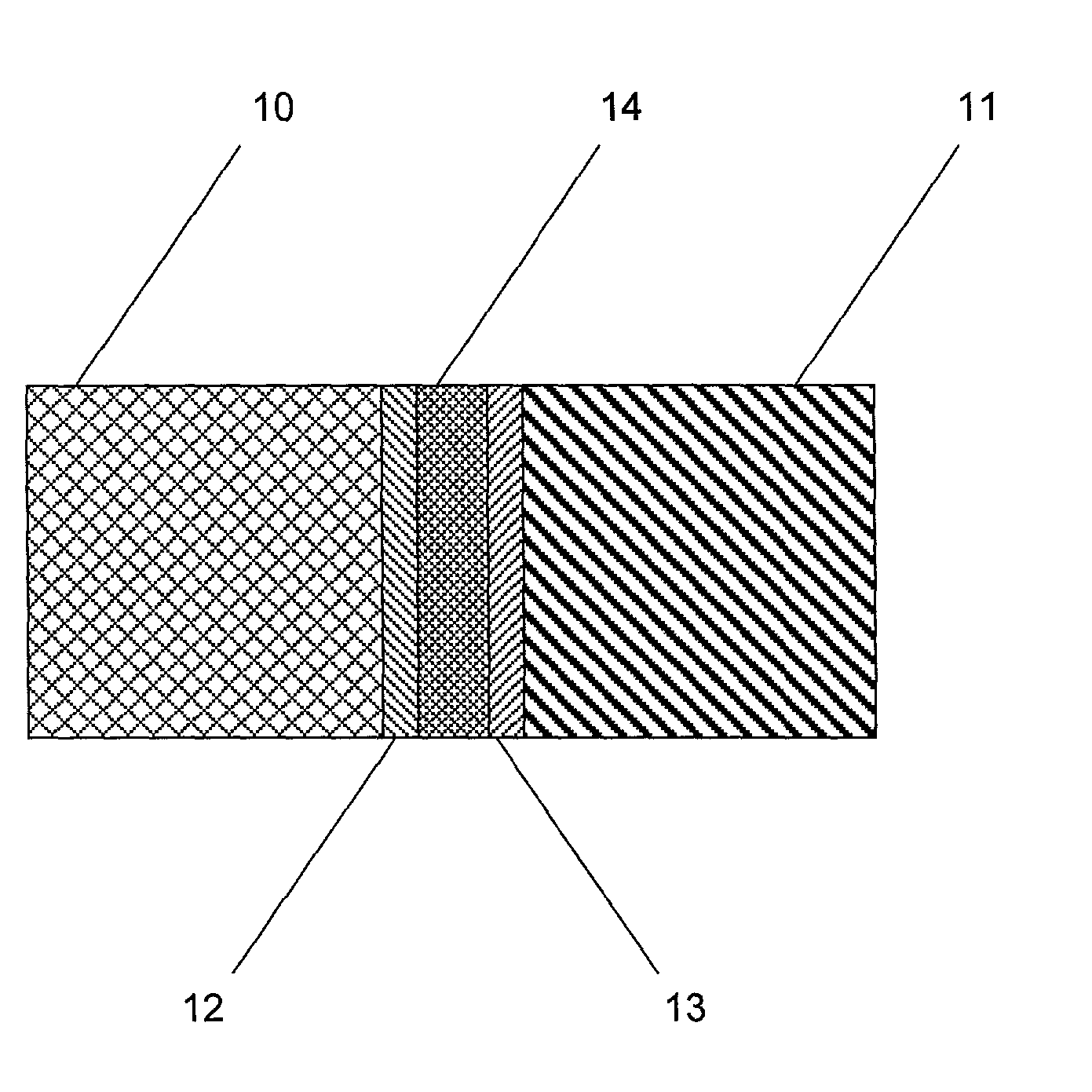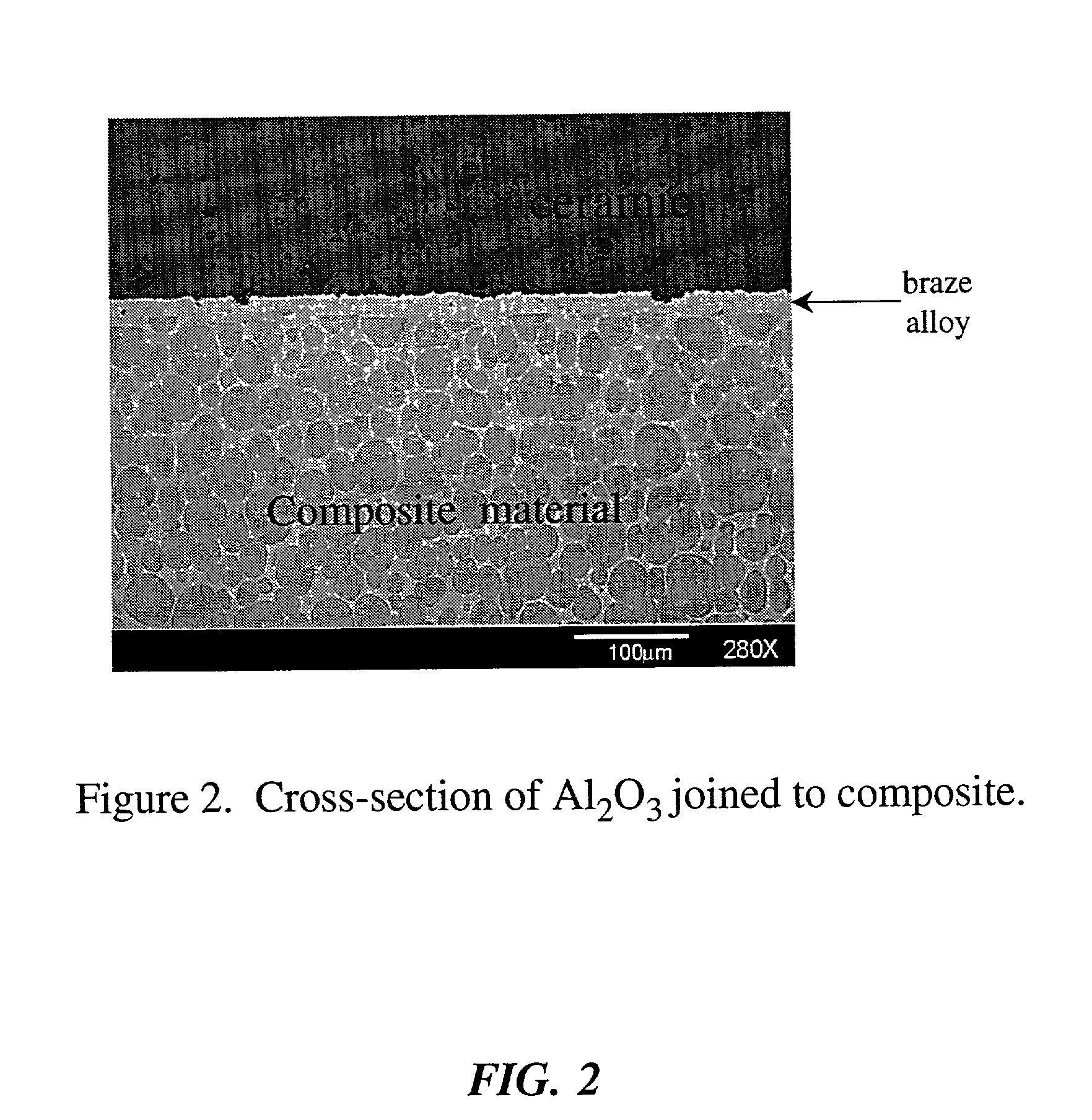Braze system and method for reducing strain in a braze joint
a braze joint and strain reduction technology, applied in the direction of manufacturing tools, solvents, transportation and packaging, etc., can solve the problems of catastrophic failure of the joint, thermal mismatch between ceramic and metal materials, and zirconium also being expected to have limited utility
- Summary
- Abstract
- Description
- Claims
- Application Information
AI Technical Summary
Benefits of technology
Problems solved by technology
Method used
Image
Examples
Embodiment Construction
[0023] A braze joint utilizing the braze system of the present invention is shown schematically in FIG. 1 and was prepared as described below.
[0024] A wafer 14 comprising the intermediate composite material was prepared as described above using finely divided tungsten particles (-325 US Screen Mesh) dispersed into a quantity of copper. The intermediate composite was then cooled and formed into a billet from which wafers with a thickness of about 1 mm were cut. Wafer 14 was then sandwiched between layers 12 and 13 of an appropriate braze alloy and the ensemble sandwiched between a first test piece 10 of 94% alumina ceramic, and a second test piece 11 of INCONEL 625 nickel alloy. The entire assembly was then held together in a braze fixture (not shown) for alignment and to apply modest pressure to the parts (about >150 kPa). Layer 12 comprised a so-called "active" braze alloy consisting essentially of gold with 16% nickel, 1.75% vanadium, and 0.8% molybdenum. Layer 13 can be the same ...
PUM
| Property | Measurement | Unit |
|---|---|---|
| weight fraction | aaaaa | aaaaa |
| diameter | aaaaa | aaaaa |
| thick | aaaaa | aaaaa |
Abstract
Description
Claims
Application Information
 Login to View More
Login to View More - R&D
- Intellectual Property
- Life Sciences
- Materials
- Tech Scout
- Unparalleled Data Quality
- Higher Quality Content
- 60% Fewer Hallucinations
Browse by: Latest US Patents, China's latest patents, Technical Efficacy Thesaurus, Application Domain, Technology Topic, Popular Technical Reports.
© 2025 PatSnap. All rights reserved.Legal|Privacy policy|Modern Slavery Act Transparency Statement|Sitemap|About US| Contact US: help@patsnap.com



